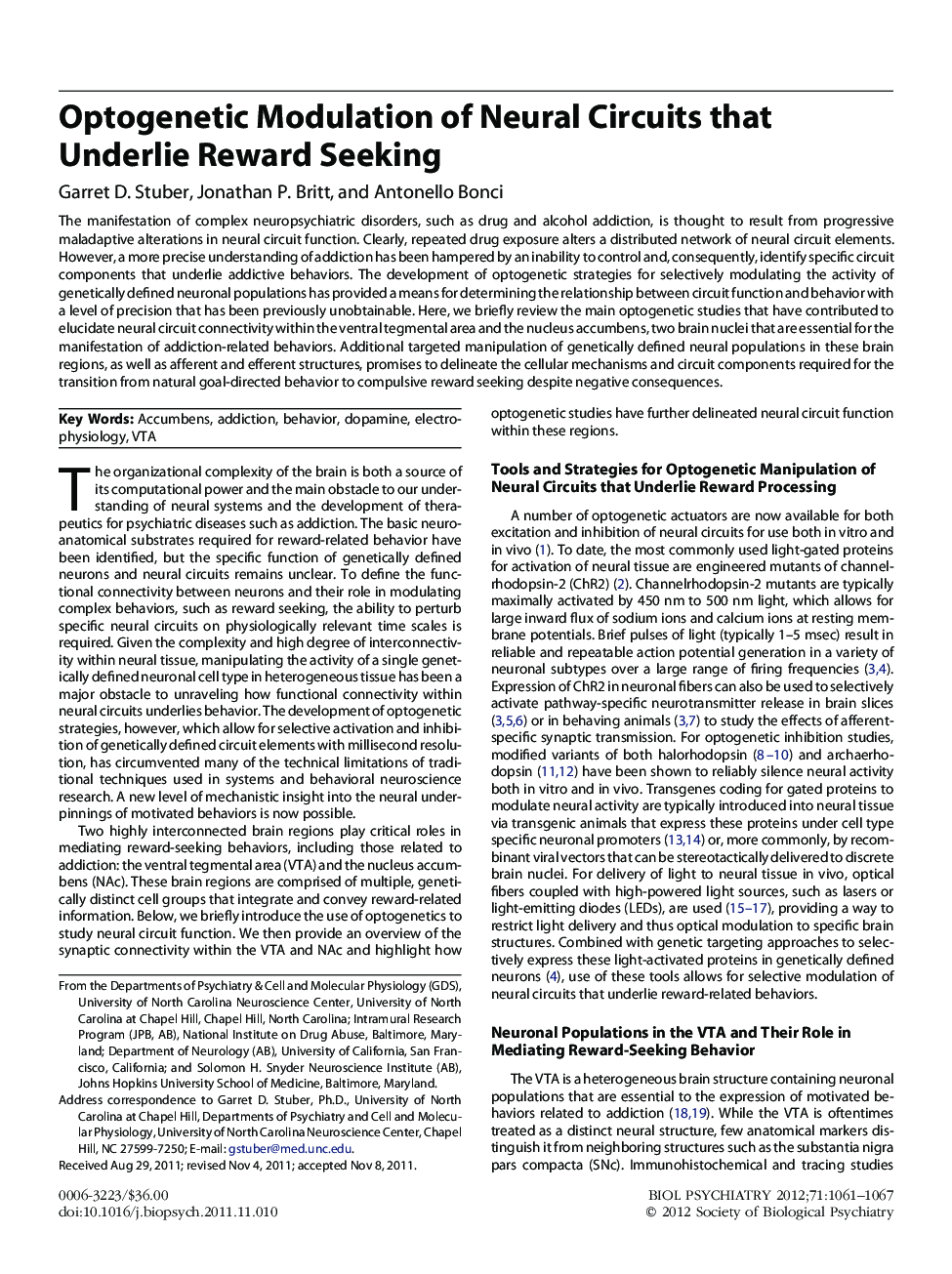| Article ID | Journal | Published Year | Pages | File Type |
|---|---|---|---|---|
| 4177889 | Biological Psychiatry | 2012 | 7 Pages |
The manifestation of complex neuropsychiatric disorders, such as drug and alcohol addiction, is thought to result from progressive maladaptive alterations in neural circuit function. Clearly, repeated drug exposure alters a distributed network of neural circuit elements. However, a more precise understanding of addiction has been hampered by an inability to control and, consequently, identify specific circuit components that underlie addictive behaviors. The development of optogenetic strategies for selectively modulating the activity of genetically defined neuronal populations has provided a means for determining the relationship between circuit function and behavior with a level of precision that has been previously unobtainable. Here, we briefly review the main optogenetic studies that have contributed to elucidate neural circuit connectivity within the ventral tegmental area and the nucleus accumbens, two brain nuclei that are essential for the manifestation of addiction-related behaviors. Additional targeted manipulation of genetically defined neural populations in these brain regions, as well as afferent and efferent structures, promises to delineate the cellular mechanisms and circuit components required for the transition from natural goal-directed behavior to compulsive reward seeking despite negative consequences.
